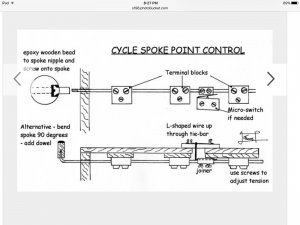KB02
Well-Known Member
As I have been getting into scratch building my own turnouts, I have come across a conundrum: While most of my locos will be able to transverse these manually operated turnouts with a dead frog, it would be good to have them powered. The problem: I'm cheap and on a super tight budget. What are some good low-tech ways of powering a frog on a manual turnout?
I've thought about the little slider SPDT/DPDT switch idea, but with the closing of the local RadioShack, they're availability locally is pretty much non-existent.
I've thought about the little slider SPDT/DPDT switch idea, but with the closing of the local RadioShack, they're availability locally is pretty much non-existent.



